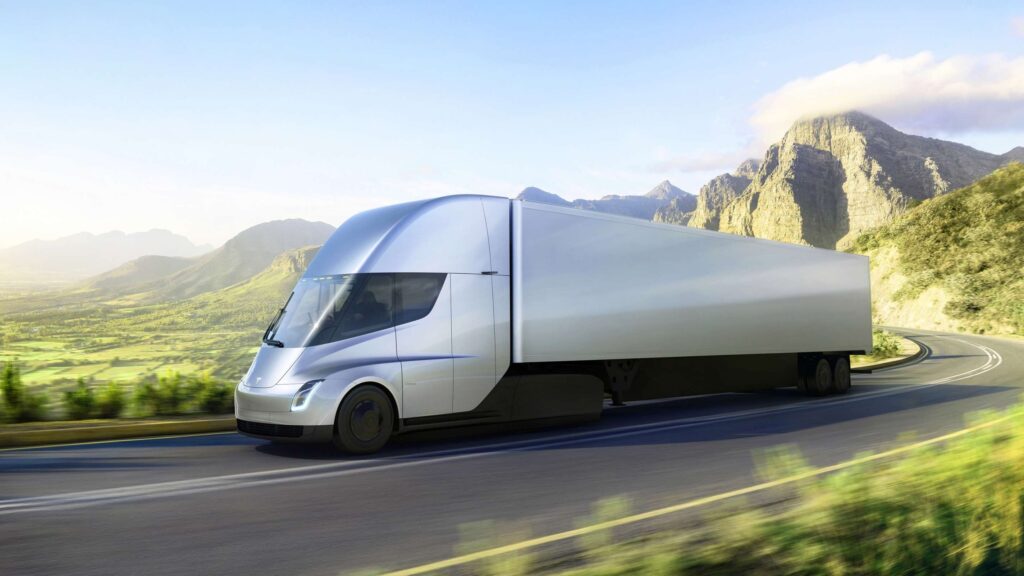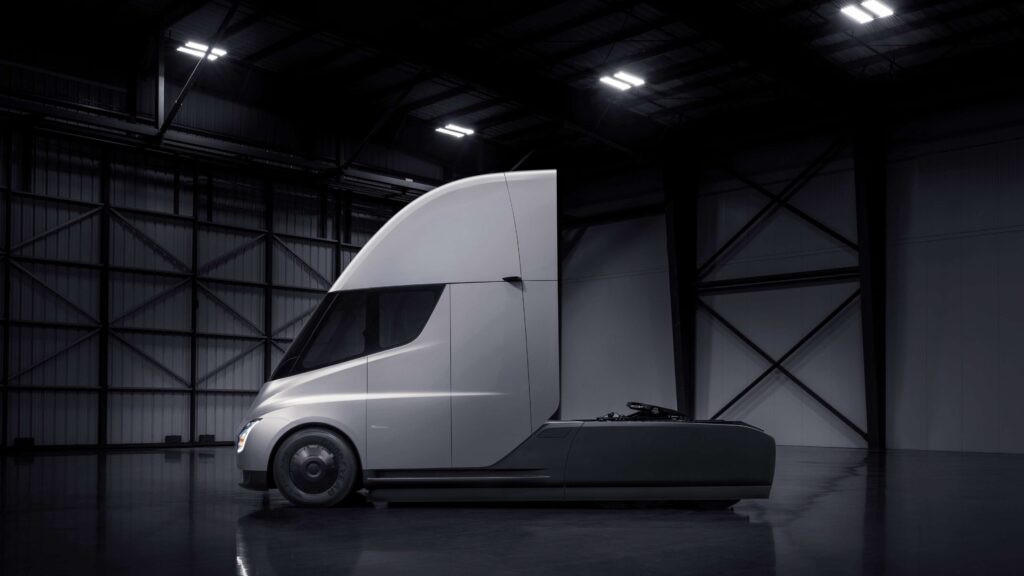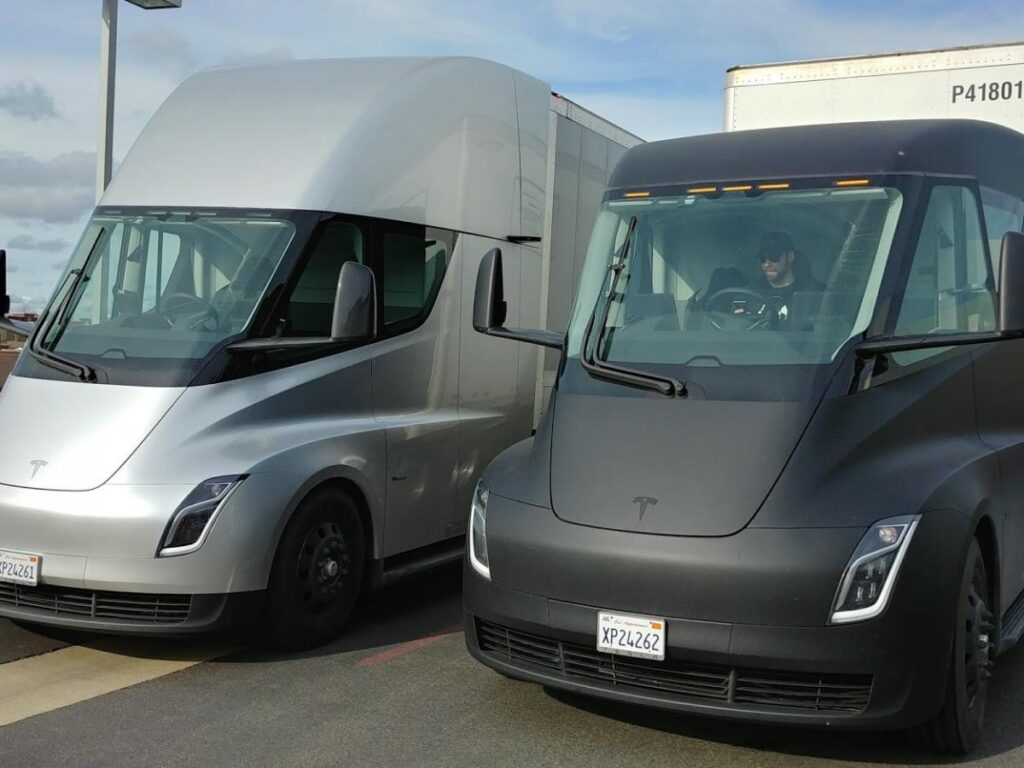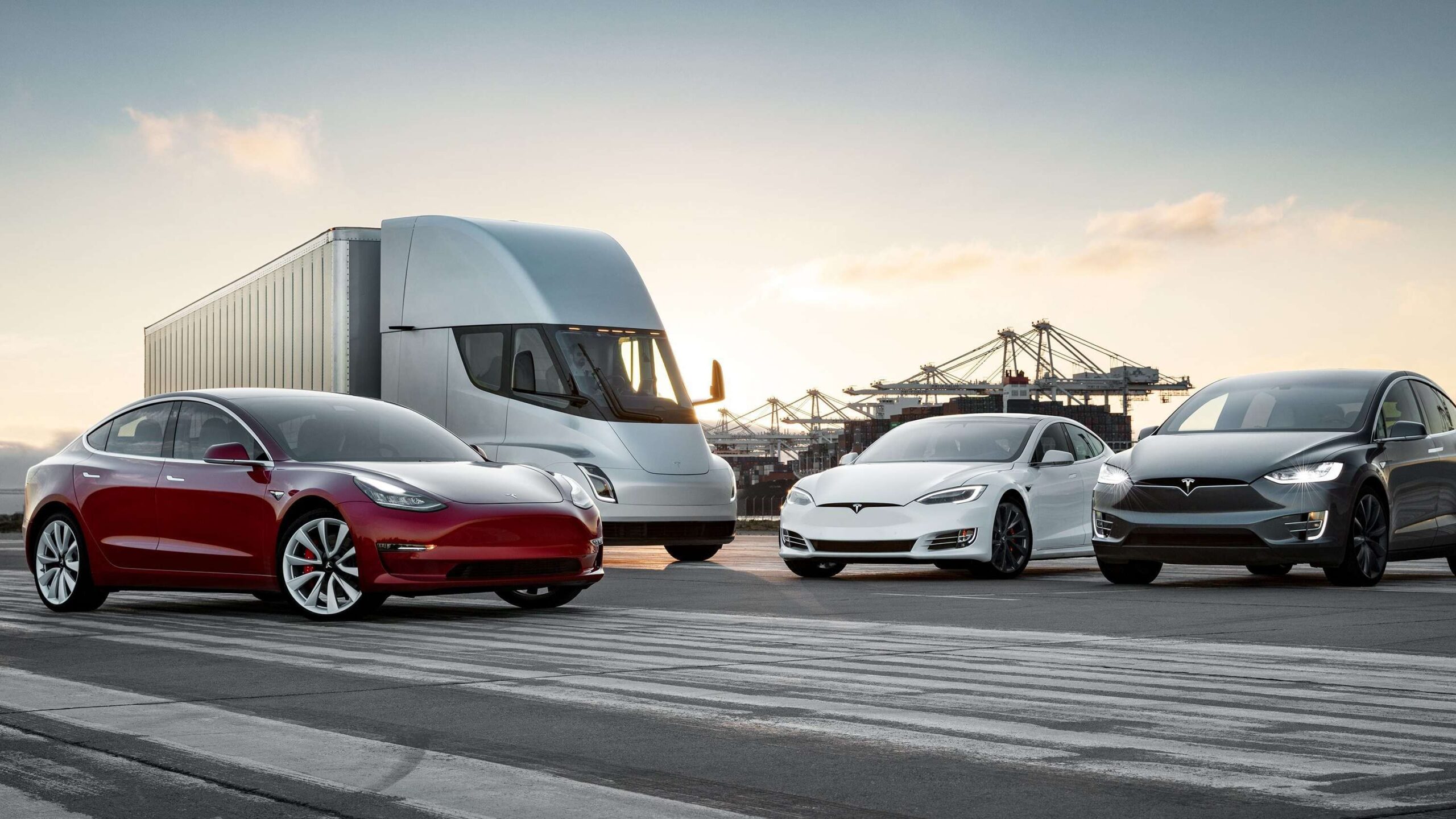The world of heavy-duty transport may soon look very different. For years, skeptics have shrugged at the idea of a battery-powered Class 8 truck: “diesel is king”, “batteries are too heavy”, and “truck drivers won’t switch” have all been common refrains. Yet, with the arrival of the next-generation Tesla Semi — Gen 2 — Elon Musk and his team seem ready to prove the doubters wrong.
In this blog post we’ll dive deep into what makes the Semi Gen 2 so compelling: the improved battery architecture, aerodynamic refinements, production-line innovations, full-self-driving capability, and what it all means for the freight industry. We’ll cover the tech, the timeline, the challenges — and why this might not just be an EV truck, but a full logistics revolution.
Why the Tesla Semi has flown under the radar — and why that’s about to change
Since its initial unveiling in 2017, the Tesla Semi has been met with considerable scepticism. Many industry watchers thought: “Electric trucks for long-haul? That’s nice in theory but not practical.” After all, hauling massive loads across thousands of miles has always been the domain of diesel-powered rigs. Batteries were thought to be too heavy, bulky, expensive, and unable to match the range and power of diesel.

Even major figures in the business world expressed doubts. But Tesla looked at this as a challenge — not as a reason to stay quiet. The company built prototypes, learned from them, and iterated. Now, all the signals point to ramp-up time: a dedicated production line, a new battery architecture, and design refinements geared for efficiency and cost reduction.
Slow start, but big ambitions
- The Semi first debuted nearly a decade ago.
- Deliveries began in late 2022, but only in small quantities.
- Now Tesla is setting its sights on full-scale production, reportedly ramping up in late 2025/2026.
What this means: if you’ve been ignoring the Semi because “just a few units” seem in play — change that mindset. A much bigger chapter is unfolding.
What’s new in the Gen 2 Tesla Semi
Let’s go through the headline upgrades. These aren’t incremental tweaks — they reflect a broad rethink of how to build a Class 8 electric truck that makes business sense.
Advanced battery technology and efficiency gains
One of the biggest leaps is the battery. While earlier versions of the Semi already achieved impressive numbers (for an electric truck), Gen 2 introduces higher-density cells and smarter integration. Reports mention that Tesla is moving toward its structural 4680-form battery cell architecture in this truck.
The benefits:
- A smaller, lighter battery pack that doesn’t sacrifice range thanks to efficiency improvements.
- Improved energy consumption per mile — real-world testing of earlier Semis showed around 1.7 kWh/mile.
- Cost reduction in battery production and pack integration — a key to making electric trucks viable in large numbers.
Aerodynamics, design tweaks and driver-friendly features
Gen 2 isn’t just about the internal bits — the exterior and cabin features get major upgrades. The aerodynamics have been refined, and practical usability for truck drivers has been improved.
Highlights include:
- Lower drag coefficient — new versions push efficiency even further.
- New side mirrors/camera system, “drop glass” (lowerable side window) for easier gate interactions, improved visibility and ergonomics.
- A potential sleeper-cab version on the horizon, which means the Semi may cater to long-haul drivers’ comfort, not just “short hops.”

Production & manufacturing innovation
Perhaps one of the most important pieces: making the Semi not just advanced, but affordable and scalable. Innovations in manufacturing can make or break electric truck economics.
Key production elements:
- A new dedicated production line (at Tesla’s Nevada facility) built for high volume.
- Optimised assembly to reduce build time per truck, and integration of on-site battery manufacturing to cut costs.
- Charging infrastructure ramp-up: Tesla is rolling out 1.2 MW capable chargers for its truck fleet.
These components align to make the Semi Gen 2 more than “just a showpiece.” It’s gearing up for real business deployment.
Autonomous driving capability (FSD) and logistics impact
Another major differentiator: the Semi is expected to integrate Full Self-Driving (FSD) capability over time — both to improve safety and to address the truck-driver shortage.
The Semi as more than a truck:
- With longer routes and rested drivers, there’s potential for improved logistics efficiency, lower operating costs and improved safety.
- Tesla’s push here signals that the Semi is designed not only to be electric but to redefine transportation operations.
Business case – why fleets should care
For logistics companies and fleet operators, switching to electric heavy-duty trucks has to make sense on cost, performance and reliability. Gen 2 of the Semi aims to check these boxes.
Lower energy and maintenance cost per mile
Electric trucks inherently simplify many components — fewer moving parts, less engine complexity, no diesel after-treatment systems.
Travel up to 500 miles on a single charge. Recover up to 70% of range in 30 minutes. Energy consumption less than 2 kWh per mile.
Real-world testing backs up the numbers: for example, one customer reported ~1.7 kWh per mile.
When you scale that across the hundreds of thousands of miles commercial trucks accumulate each year, the savings in fuel and maintenance become substantial.

Environmental benefits – and regulatory tailwinds
Heavy-duty trucks make up a small fraction of vehicles on roads — but a disproportionate share of emissions. Electrifying this segment offers big CO₂ savings.
- Fleets that adopt electric Class 8 vehicles can stay ahead of emissions regulations and meet corporate sustainability goals.
- Saving 1 million gallons of diesel equates to tens of thousands of tons of CO₂ avoided.
Operational advantages & driver retention
Beyond cost and emissions, electric trucks bring operational advantages:
- Reduced noise and vibration in cabins → better driver comfort.
- FSD/higher automation capability → reduced driver fatigue, improved safety.
- Predictable energy cost vs volatile diesel prices → easier fleet budgeting.
For companies struggling with driver retention and rising labour costs, the Semi Gen 2 might be a tool to attract and keep drivers by offering better working conditions and more modern equipment.
Challenges still ahead
While the Semi Gen 2 looks very promising, some hurdles remain. No technology is without its real-world constraints — and for electric heavy trucks, several stick out.
Infrastructure & charging network
Even with Tesla’s 1.2 MW charging solution in development, the infrastructure for heavy-duty electric trucks is not yet as widespread as diesel refueling.
Fleets operating long-haul routes need reliable, high-power charging at depots or along corridors. Until this “charging backbone” for Class 8 EVs is mature, adoption may be slower.
Production ramp-up and supply-chain risks
Tesla has announced ambitious production targets — tens of thousands of units per year.
- The production line at Nevada will ramp for 50,000 units annually.
- Achieving full scale will require resolving supply chain, labour, and cost challenges.
Also, some critics note the Semi program has been delayed multiple times.
Up-front cost and ROI timeline
Electric trucks may have higher purchase prices currently compared to diesel rigs. The ROI depends on energy savings, maintenance, and charging availability.
For some operators, total cost of ownership over several years — plus tax credits and incentives — will make all the difference.

What this means for the future of logistics
The Semi Gen 2 isn’t just another vehicle — it might be a pivot point for the freight industry.
New business-models & service models
With electric trucks and automation, logistics companies may rethink:
- Shift patterns (less fatigue, fewer mandatory breaks).
- Depot infrastructure (charging vs fuel).
- Fleet composition: fewer diesel trucks, more electric ones.
- Data and telemetry: enabling predictive maintenance and smarter logistics.
Competitive pressure & market disruption
Legacy truck manufacturers and diesel engine suppliers may feel pressure. If Tesla delivers electric Class 8 trucks at scale and with cost advantages, it could reshape the competitive landscape.
Early adopters in logistics will gain branding, sustainability, and cost advantages.
Environmental & regulatory acceleration
Governments are increasingly mandating zero-emission vehicles. An electric truck that works today helps fleets stay compliant and future-proof their operations.
The Semi Gen 2 may accelerate industry-wide electrification of heavy haulage.
Timeline summary – what to watch for
Here’s a quick look at where things stand and what to expect:
- 2017: Tesla Semi unveiled.
- 2022: First small-volume units delivered.
- Late 2025: Tesla aims to begin volume production at the Nevada line.
- 2026: Ramp to tens of thousands of units per year expected.
- Infrastructure rollout: 1.2 MW chargers and Megachargers underway.
For fleets, logistics firms and truck drivers, this means: if you haven’t already, it may be time to pay attention.
Final thoughts – why the Semi Gen 2 could be a game-changer
When you put it all together — advanced battery tech, aerodynamic & driver-focused design, manufacturing innovation, cost and operational benefits, and logistics disruption potential — the Semi Gen 2 stands out.
Here’s what sets it apart:
- It’s not an electric truck just for show, but one built to scale and compete.
- It may change how freight is moved, who drives, and how depots are configured.
- Fleets that embrace it early will gain a major competitive edge.
- For truck drivers: quieter cabins, better comfort, smarter tools.
- For the environment: massive emissions reductions.
Of course — every new technology comes with risk. Infrastructure, build-out, supply-chain, and cost-effectiveness all matter. But if Tesla pulls off what it’s promising with the Semi Gen 2, it could be one of the most significant shifts in commercial transportation in decades.
FAQs
1. What is the Tesla Semi Gen 2?
The Tesla Semi Gen 2 is the second generation of Tesla’s fully electric Class 8 truck, designed for long-haul freight transport. It features improved aerodynamics, a more efficient battery system, lower production costs, and will soon include Full Self-Driving (FSD) capability.
2. When will the Tesla Semi Gen 2 enter mass production?
According to Elon Musk, mass production of the Tesla Semi Gen 2 is expected to begin in late 2025, with full-scale operations ramping up through 2026 at Gigafactory Nevada.
3. How far can the Tesla Semi Gen 2 travel on a single charge?
The Tesla Semi Gen 2 is expected to maintain its long-range capability of up to 500 miles (800 km) on a single charge, even with a smaller and lighter battery pack due to improved aerodynamics and efficiency.
4. What kind of battery does the Tesla Semi Gen 2 use?
The new version uses Tesla’s 4680 high-voltage cells, known for their high energy density (up to 300 Wh/kg), lower cost, and structural integration. This enables better range, lower weight, and faster charging.
5. How long does it take to charge the Tesla Semi?
Using Tesla’s Megacharger network, the Semi can recharge up to 70% of its range in about 30 minutes. Full charging time will depend on battery size and charger power, but 1.2 MW charging speed dramatically reduces downtime.
6. What’s new in the design of the Tesla Semi Gen 2?
The Gen 2 features improved aerodynamics, new camera-integrated mirrors, and a drop-glass window for easier gate or checkpoint communication. It also includes interior upgrades focused on driver comfort and visibility.
7. Will the Tesla Semi Gen 2 have a sleeper cab?
Yes, a sleeper cab variant is in development. Tesla engineer Dan Priestley confirmed that future models will include a sleeping area to support long-haul routes and improve driver comfort.
8. How much does the Tesla Semi cost?
The estimated price of the Tesla Semi Gen 2 is around $250,000 for the long-range version. While higher than diesel trucks upfront, it offers massive savings in fuel, maintenance, and operational costs over time.
9. How efficient is the Tesla Semi compared to diesel trucks?
The Tesla Semi consumes about 1.7 kWh per mile, equating to around $0.30 per mile in electricity costs — compared to $0.50–$0.60 per mile for diesel trucks. Over hundreds of thousands of miles, this leads to millions in savings.
10. Which companies are already using the Tesla Semi?
Major brands like PepsiCo, Walmart, Costco, DHL, and SIA have been early adopters. These fleets have confirmed the 1.7 kWh/mile efficiency and strong performance claims Tesla made.
11. What makes the Tesla Semi more aerodynamic?
The Semi boasts a drag coefficient of 0.4, roughly half that of a conventional diesel truck. This is achieved through its streamlined design, integrated mirrors, enclosed wheel wells, and optimized airflow across the body.
12. How will Full Self-Driving (FSD) work in the Tesla Semi?
The Semi will incorporate Tesla’s FSD software, enabling autonomous highway driving, lane changes, and obstacle detection. Drivers will still oversee operations, but automation will reduce fatigue, accidents, and costs.
13. How fast can the Tesla Semi accelerate?
Despite weighing up to 80,000 lbs, the Tesla Semi can accelerate from 0 to 60 mph in just 20 seconds — much faster than diesel competitors. This highlights its instant torque and powerful tri-motor electric drivetrain.
14. How will Tesla produce 50,000 Semis per year?
Tesla’s Gigafactory Nevada has been upgraded with a dedicated Semi production line capable of building a truck every 10–15 minutes. The integration of on-site battery manufacturing boosts efficiency and lowers costs.
15. What environmental impact does the Tesla Semi have?
The Semi drastically reduces emissions. Saving 1 million gallons of diesel equates to eliminating 22,000+ tons of CO₂. Since heavy-duty trucks make up just 1% of vehicles but 18% of emissions, this is a huge environmental win.
16. Why is the Tesla Semi Gen 2 a game-changer for logistics?
The Semi Gen 2 combines electric efficiency, automation, and affordability — cutting costs, lowering emissions, and solving the truck driver shortage crisis. It could redefine global freight logistics for decades to come.
Read More:
- Tesla hints it could see ‘a few more vehicles’ released soon
- Tesla Cybercab spotted testing on public roads for the first time
- Tesla Model Y on FSD saves couple after encountering King of edge cases
- Bank of America raises Tesla PT to $471, citing Robotaxi and Optimus potential
- Tesla Full Self Driving (FSD) is nearing approval in a new country


1 thought on “Elon Musk Reveals Tesla Semi Gen 2 Finally Here! Mass Production With New Battery, Glass & FSD”